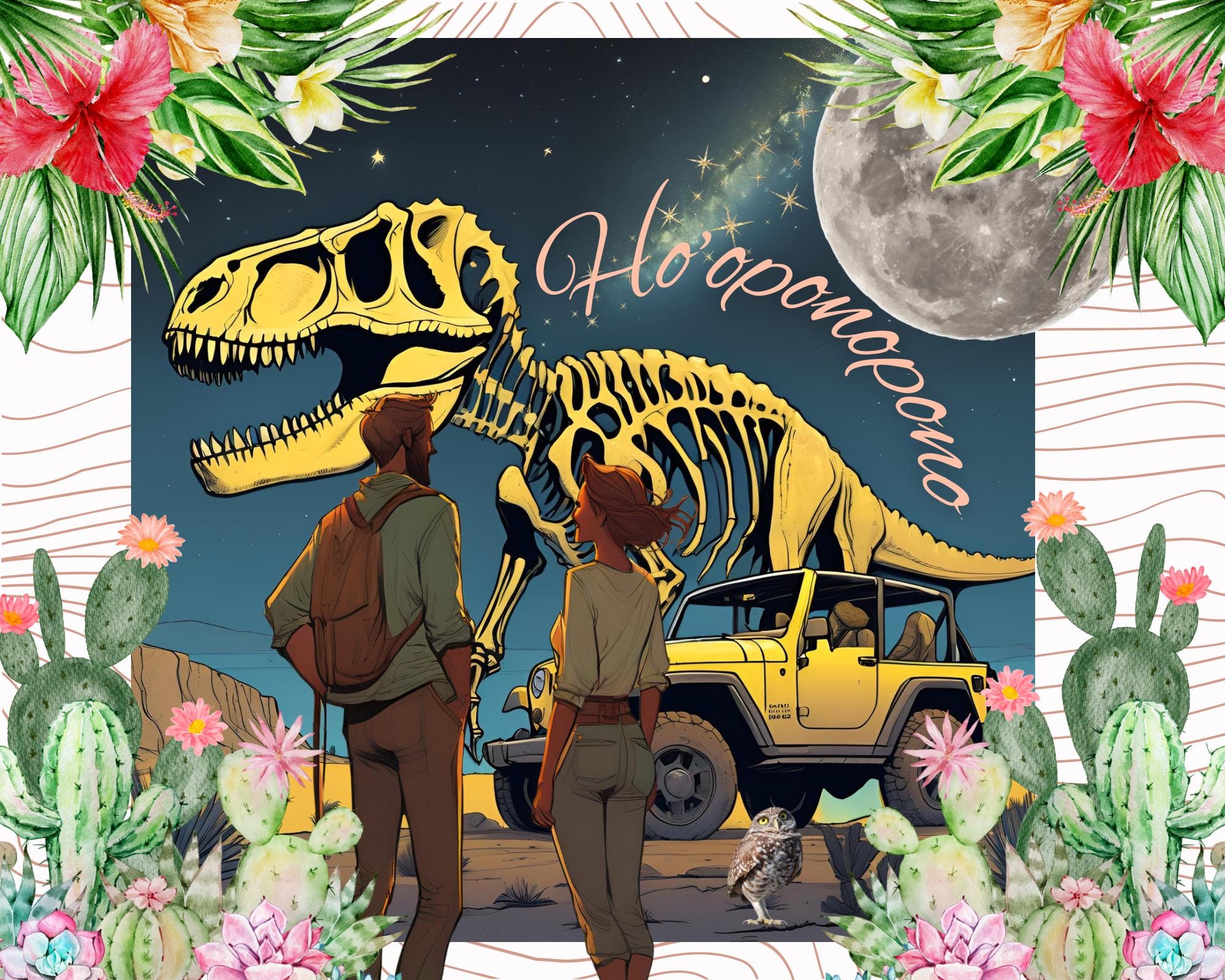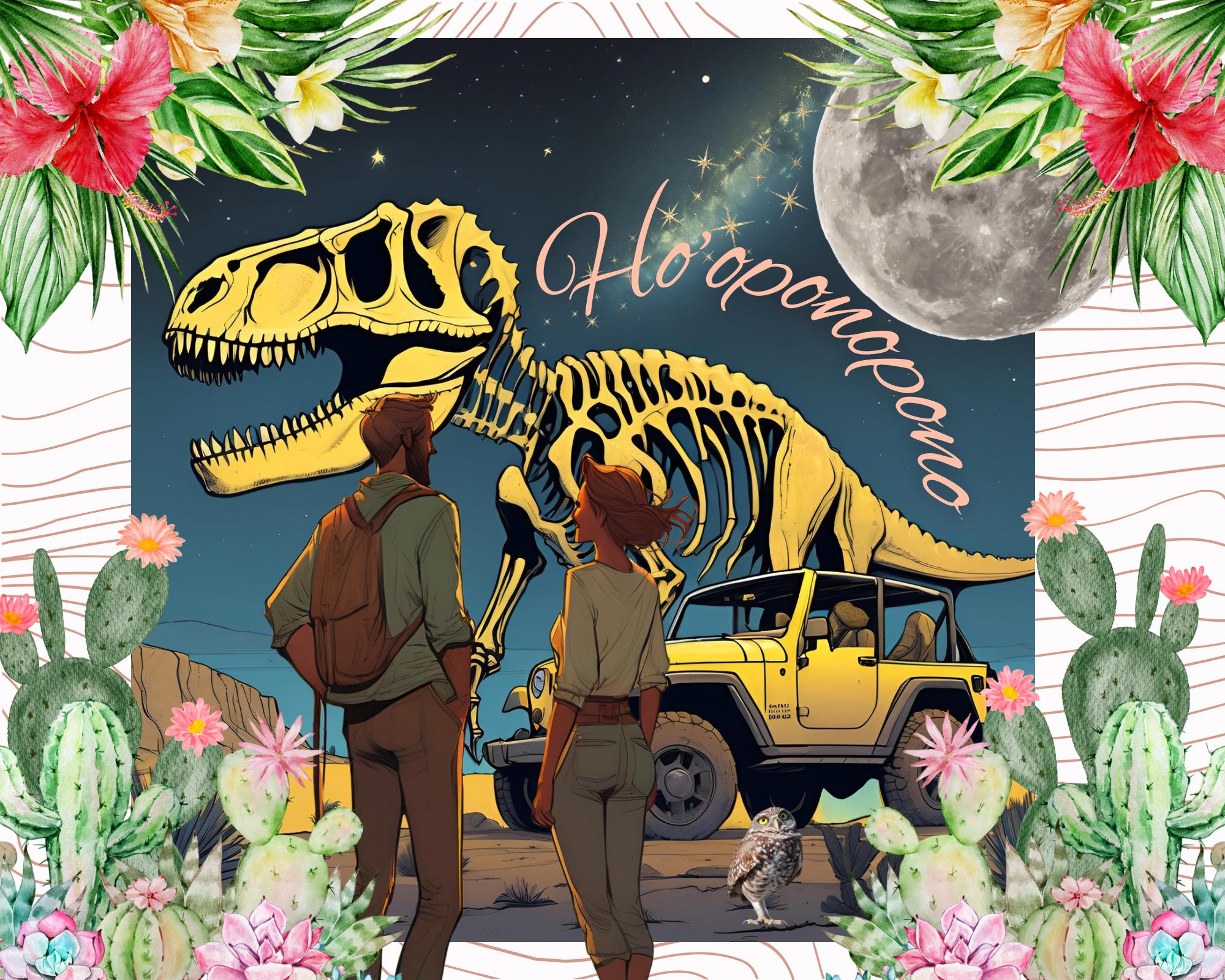
Cosmic Gratitude: Forgiveness, Dinosaurs, and the Deep Magic of Ho’oponopono
Have you ever paused to thank a dinosaur for the fuel in your car?
It sounds absurd—until you realize that the very oil we rely on is the ancient alchemy of compressed plant and animal life, including the creatures that once roamed a very different Earth. That car ride you took today? Fueled by eons of evolution. The water you drank? It may have once flowed through the veins of glaciers or been exhaled by ancient forests. The calcium in your bones? Stardust.
Gratitude, when we allow it to stretch beyond the confines of our immediate lives, becomes a spiritual practice—one that connects us to every living thing that ever was. It moves beyond politeness or fleeting positivity and into the sacred, the scientific, the ancestral.
Gratitude as a Portal to Wholeness
Gratitude isn’t just a mindset; it’s a healing force. When we say thank you to life—especially the messy, uncomfortable, or ancient parts—we begin to dissolve the illusion of separateness. We realize we are not on Earth but of Earth. And that changes everything.
Practicing gratitude at this cosmic level is a revolutionary act. It invites us to recognize that the atoms of our bodies, the stories in our bloodlines, and the breath we take are all deeply, intricately connected. Gratitude can bring peace not just to our minds but to generations.
Ho’oponopono: The Sacred Practice of Making Things Right
This is where forgiveness enters. In Hawaiian tradition, Ho’oponopono is a powerful practice for healing and reconciliation.
At its heart are four simple phrases:
- I’m sorry.
- Please forgive me.
- Thank you.
- I love you.
This mantra is not just for interpersonal conflict; it’s for ancestral healing, energetic clearing, and self-compassion. It is said that saying these words can cleanse stuck patterns, soothe the soul, and even heal relationships without needing the other person present. Ho’oponopono teaches us that forgiveness is not about blame—it’s about liberation.
Imagine whispering this prayer to the land beneath your feet. To the fossilized beings that became your electricity. To the ancestors who survived and struggled so you could be here. To your own inner child. This is the depth of gratitude and forgiveness we’re capable of.
What If Forgiveness Was Elemental?
What if you forgave yourself the way the Earth forgives? Season after season, she begins again. Rivers flood and dry. Volcanoes destroy and create. Nothing is held forever. Forgiveness, like gratitude, is natural—it flows if we let it.
And when you forgive, you open space for joy. Gratitude becomes easier. Life feels more sacred.
A Cosmic Gratitude Practice: Thank a Dinosaur
Try this today:
Stand outside. Feel the Earth beneath you.
Take a deep breath and say:
Thank you to the dinosaurs, the minerals, the stars, the rivers. Thank you to all that came before. I forgive myself. I forgive the past. I’m sorry. Please forgive me. Thank you. I love you.
It’s simple. It’s strange. It’s sacred. And you can do this practice with well more than dinosaurs. Choose any thing you wish to make peace with or give your deeepest gratitude to by way of using this beautiful practice.
So... What is the most cosmic level of gratitude or most ancient thing you’re grateful for today?
Let your gratitude go deep—down to the bones, the stars, the source.
It is through our love and gratitude that we heal ourselves and by association all that is.
So much love,
Vichelle
Works Cited
Braden, Gregg. The Divine Matrix: Bridging Time, Space, Miracles, and Belief. Hay House, 2007. Hew Len, Ihaleakala, and Joe Vitale. Zero Limits: The Secret Hawaiian System for Wealth, Health, Peace, and More. Wiley, 2007.
Krauss, Lawrence M. A Universe from Nothing: Why There Is Something Rather than Nothing. Free Press, 2012.
Kurlansky, Mark. Salt: A World History. Penguin Books, 2003.
Schaub, David. “Ho’oponopono and the Power of Forgiveness.” Psychology Today, 10 July 2018, www.psychologytoday.com/us/blog/finding-purpose/201807/hooponopono-and-the-power-forgiveness
Zalasiewicz, Jan. The Earth After Us: What Legacy Will Humans Leave in the Rocks? Oxford University Press, 2008.
